Mongolia, land of vast blue skies and the endless and rolling hills of the grassy steppe, is a land where sheepherders in traditional garb live side by side with young Mongolian tour guides sporting iPods and Louis Vuitton. Giant monuments to Genghis Khan and his horse lords of old who prompted the building of the Great Wall of China stand watch over the country's sparse population of peaceful shepherds and nomads.
Travelers willing to take on the rugged, largely untouched landscapes of Mongolia will be rewarded with some of the most unique travel experiences in the world. Below are the top five experiences not to be missed in Mongolia.
1. Stay a night in a nomadic family's ger
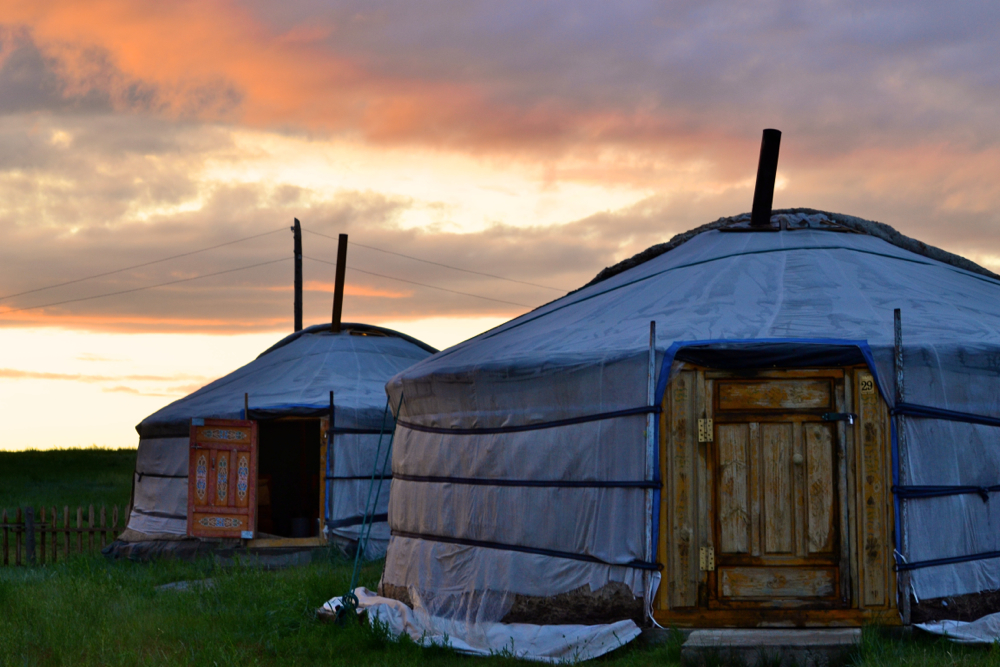
In Mongolian, the word ger means 'home', and with less than half the population living in city centers, many families rely on movable homes to maintain their nomadic lifestyle.
Mongolians are known for their hospitality in this often harsh land. Anywhere you venture outside the capital you'll find Mongolian families willing to open up their homes for a hot cup of buttery milk tea, a shot or two of vodka around the fire and a warm place to sleep in one of the family gers.
The white circular tent-like structures are erected by draping thick wool blankets over a self-supporting lattice frame with a roof of intricately painted wooden beams. A wood burning stove in the center of many gers keeps them toasty warm, even during Mongolia's sub-zero winter temperatures.
Since most nomadic families make a living from their flocks, you'll probably have the opportunity to learn about sheep, goat, horse, or camel herding, and if you're lucky, you can even try your hand at milking a camel or horse.
2. Ride horses around Lake Hovsgul
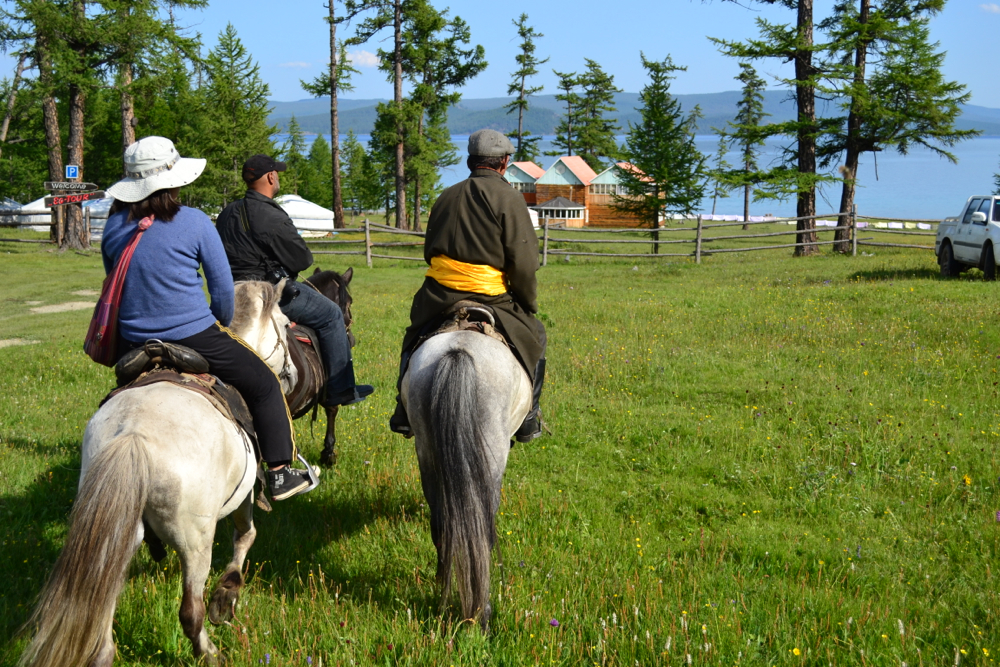
Lake Hovsgul, a popular summer vacation destination with Mongolian tourists from the capital, is reminiscent of a European alpine lake, with crystal-clear waters and tree-lined shores. It takes about two weeks to circumnavigate the lake, Asia's second largest fresh water body of water, and without roads, the only way to do it is on horseback.
The horse has held a revered spot in Mongolian culture since the days of Genghis Kahn and his horse lords who conquered much of the continent. The majestic animals, smaller in stature than those found in the West, provide milk, transportation, and occasionally meat to Mongolia's residents both in the cities and in the countryside.
The traditional Mongolian saddle, made from wood, feels strange and uncomfortable to visiting riders, but at Lake Hovsgul, you can make your trek from the comfort of a Russian leather saddle. The path around the lake meanders through densely forested areas, as dim as dusk even in early afternoon, and along winding cliffs dropping off toward the turquoise waters of the lake. Along the way you may stumble upon a camp of reindeer herders from further north with their animals in tow, and at night, you'll camp under a starlit sky with virtually no light pollution to mar the view.
3. Join the festivities of Naadam
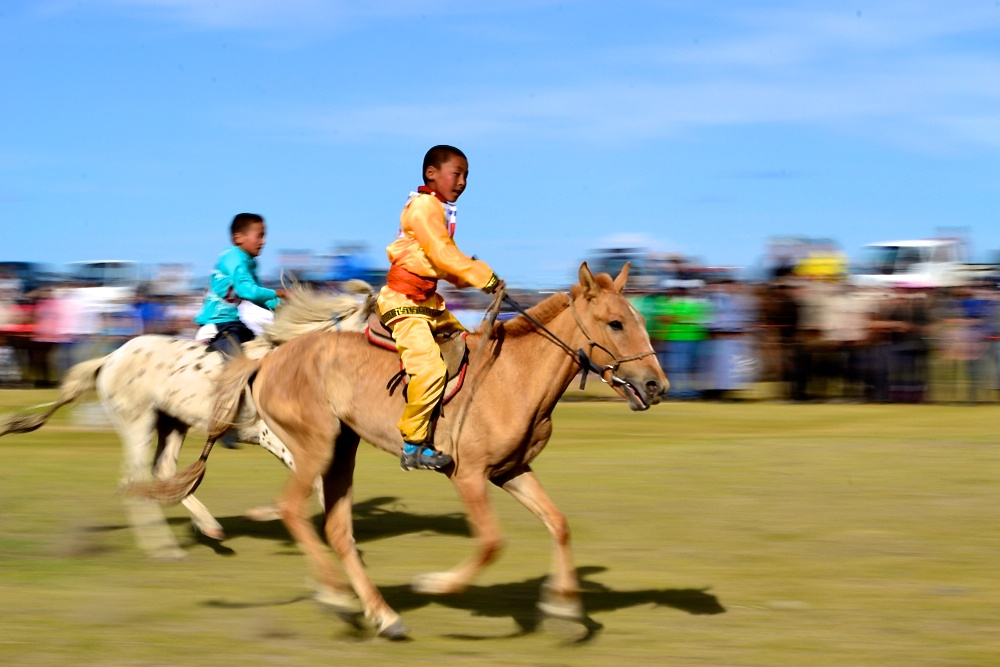
Each summer Mongolians from throughout the countryside make the journey to the capital city of Ulan Bator to witness the festival of Naadam. While the largest Naadam celebration in the capital is quite a spectacle with plenty of pomp and circumstance, visiting countryside Naadam festivals in the days leading up to the main celebration allows you to get closer to the action.
During the festival, men face off in Mongolian wrestling matches while young boys race horses across the steppe. Men and women of all ages compete in archery, all to the sounds of local musicians playing two-string horsehair violins and drums. With an almost guaranteed ringside seat at the wrestling matches and viewing spot on the finish line of the horse races, you'll be in position to feel the whoosh of wind as the racers speed by and catch the fried milk curds the winning wrestler throws out to the spectators for good luck.
During the lulls between events, contestants and spectators alike snack on hoshuur, a dough pouch filled with meat and onions and deep-fried, and sip on airag, a sour, yogurt-like beverage made from fermented mare's milk.
4. Camel trek across the Gobi's Singing Sands
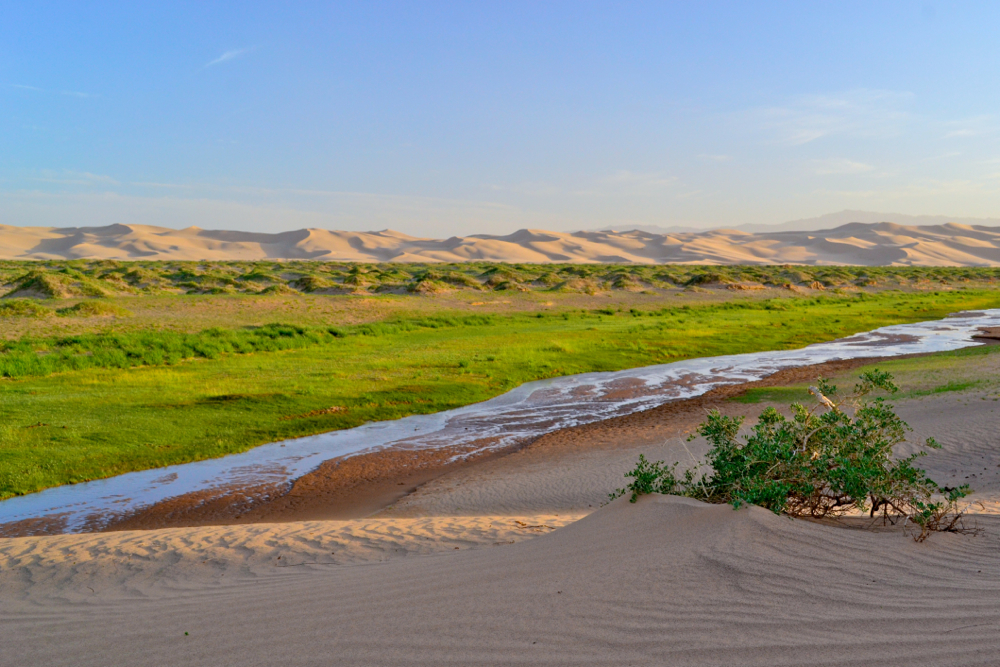
The Gobi desert encompasses a huge swathe of land in southern Mongolia and northern China, but the 115 mile stretch of sand dunes are perhaps the most iconic symbol of the region. The Singing Sands (Khongoryn Els) earn their name from the eerie whistling sound caused by the winds of the Gobi blowing over the tiny grains of sand.
Signs of life are rare, aside from a few hardy, windblown shrubs scattered across the base of the dunes. The few residents who make their homes in the area rely on herds of camels for their livelihoods. The camel, native to the Gobi region, can travel over 100 miles without water. Where your foot sinks right into the sand, making the task of traversing the dunes arduous, a camel's broad, leathery feet spread out like snowshoes across the surface of the sand.
Unlike the jerky, bumpy experience of riding horseback, riding on a camel gives you the feeling of gliding over the dunes below as you relax into the gentle sway.
5. Learn to eagle hunt in the Altai Mountains
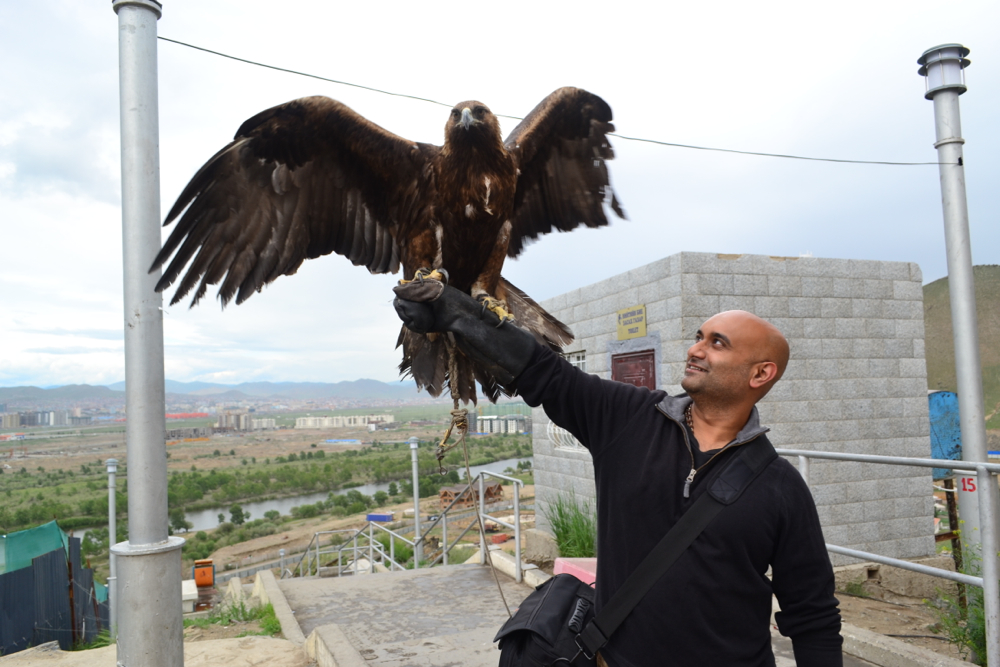
In the far reaches of western Mongolia in the Altai mountain range, the nomadic Kazakhs depend on golden eagles to hunt wildlife for sustenance. Young boys capture baby eagles from the nest and train them to hunt down rabbits, foxes, marmots, and sometimes wolves. A hunter will often work with the same eagle for nearly ten years before releasing it back into the wild.
While the trip overland from the capital to the Altai Mountains involves several days bumping along some of the worst road conditions imaginable, the rewards are plenty. Each year in October, when the weather cools down enough for the eagle hunters to descend from the high mountains, visitors can set out on horseback with a local eagle hunter to witness the early morning hunt. You'll feel the weight of the 15-pound bird on your arm and maybe even help bring home a catch.
During the annual Eagle Hunting Festival, also in October, hunters gather for contests and demonstrations, and each day of the festival culminates in a celebration of traditional Kazakh dance and music.
- Lydia Schrandt for Viator
Planning a trip? Read more about things to do in Mongolia or ask our local experts and book a private tour guide in Mongolia for a customized tour!